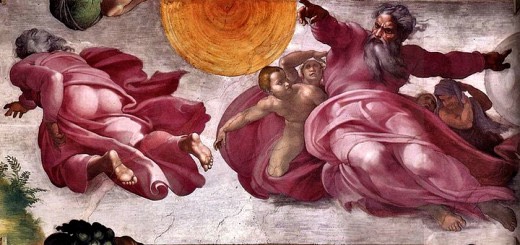Lazarus, the man Jesus loved
Biblical reflections published on the website of the Catholic LGBT association New Ways Ministry (United States), freely translated by Diana
With the resurrection of Lazarus, the Gospel of John exemplifies the decisive power of Jesus over humanity's last and worst enemy: death. For the LGBTQ community, the story of this resurrection can be a symbol of God's promise of life to the excluded, the marginalized, or those who are emotionally imprisoned. “Lazarus, come out!” Jesus orders aloud, and turning to the people around him, he continues: “Take off his bandages and let him go!”.
John 11:17-44
When Jesus arrived in Bethany, Lazarus had already been in the tomb for 4 days. Since Bethany was less than two miles from Jerusalem, many people had come to Martha and Mary to console them for the loss of their brother. When Martha knew that Jesus was coming, she went to meet him, while Mary remained at home with all those who had come to console her for her mourning.
When she met Jesus, Martha said: “If I had been here, my brother would not have died. But I know that even now God will grant you everything you ask of him.".
Jesus reassured her: “Your brother will get up again”.
Martha replied: “I know that he will rise again on the day of Resurrection of the dead”.
Jesus said to her: “I am the resurrection and the life. Whoever believes in me will live, even if he dies; and whoever is alive and believes in me will never die. Do you believe so?”.
"Yes! replied Martha, I believe that you are the Messiah, the Only Begotten Son of God who will come into the world".
After saying these words, he went home to call his sister. “The Master is here, he whispered, and asks for you". At these words Mary quickly got up and went to Him. Jesus had not yet entered the village, but was in the place where he had met Martha. Those who were consoling her saw her quickly get up and followed her, thinking that she was going to the grave to cry.
When Mary arrived at the place where Jesus was and saw him, she fell at his feet and said to him: “If I had been here, my brother would not have died”.
When Jesus saw her crying together with all those who were with her, he was deeply moved and troubled. “Where did you bury him?” he asked.
“Come and see” they replied. And Jesus cried.
The people in the crowd began to say: “Look how much she loved him!”.
Others said: “Couldn't he, who opened the blind man's eyes, preserve him from death?”.
Jesus, deeply moved, came to the tomb. It was a cave with a stone placed at the entrance. “Remove the stone”, Jesus ordered. “But, Master, said Martha, by now there will be a stench, because he has been buried for four days".
Then Jesus said: “Didn't I tell you that if you believe you will see the glory of God?”.
So they removed the stone. Then Jesus looked and said: “Father, I thank you because you listened to me. I know you always listen to me, but I said it for the benefit of the people present, so that they may believe that You sent me".
After saying these words, Jesus called out: “Lazarus, come out!”. The dead man came out, with his hands and feet wrapped in linen bandages and his face covered with a cloth. Jesus said to them: “Take off his bandages and let him go!”.
Reflection
1. A crucial event in the life of an LGBT person is the intimate recognition of one's sexual orientation and/or gender identity. Sometimes many years pass before this reality becomes clear. Coming out to oneself often gradually leads to a second crucial event: coming out to others. What has been your experience coming to terms with your sexual orientation and/or gender identity? How has this recognition helped or prevented you from coming out to yourself or others? If you are an ally of LGBT people, how does this story relate to your “coming out” as an ally?
2. Sometimes the pain and disappointments of our lives overwhelm us. We feel crushed, defeated, demoralized, destroyed. When this happens, we cry out to God blindly, sometimes hoping, sometimes despairing. In your life, how have pain and hope worked together because of your faith in Jesus?
3. Jesus cried. In Jesus we have a vulnerable God, who is not afraid to express emotions. Does this comfort or confuse you? Why?
4. Coming out of the tomb, Lazarus emerges from darkness, and from death into light and life. How do you see yourself in this metaphor?
5. Have you heard the voice of God tell you: “Are you coming out?”. In this case, how did his voice manifest itself?
6. The story ends with Jesus ordering the local community to assist Lazarus, removing the symbols of death from him and letting him go. What “garments of death” does Jesus order others to take off? How can the Church today help LGBT people and their allies in the coming out process?
Prayer
God of our fathers, inspire us with honesty and courage and help those who speak the truth.
Help us to rejoice in emerging from our tombs as we remove the bandages and shrouds that weigh us down.
Send your Holy Spirit into our hearts and homes. Infuse a new and noble spirit into our lives and affections, so that we may love and serve You and those around us, today and all the days to come.
We ask it through Jesus Christ.
Amen
Coming out is always difficult to do, no matter how many times you've done it. Negative reactions to coming out can include shock, pain, guilt, contempt, disappointment, suffering. If you experience rejection, find someone you trust to talk about your fears and concerns. However, time can heal wounds, and the next person you talk to may embrace you with acceptance, affection, and gratitude because you confided in them about such a personal and sacred matter.
This music video, It Gets Better (Broadway Sings for The Trevor Project), can encourage you to find the strength and confidence to move on in your life.
.
.
Original text: LAZARUS: The Man Jesus Loved






